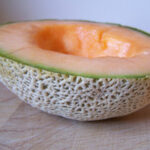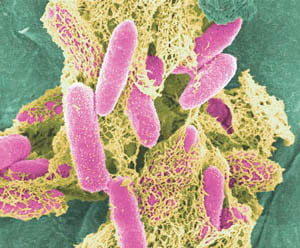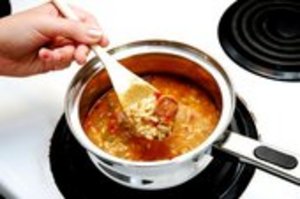Each year nearly seven million Americans will suffer from a sort of food poisoning. Some cases of food poisoning can cause death. Food poisoning happens when food has a dangerously high level of bacteria due to improper handling and cooking.
In some cases, food poisoning has happened with under cooked meat. By properly cooking meat products, not only chicken, can eliminate the outbreak of food poisoning. To completely destroy the strain E Coli 0157.H7, thoroughly cook all meats.
Once the meat has been purchased and left the store, it is the consumer’s responsibility on storing and preparing the meat. Any meat products should be stored in a cold storage area, and raw meat should be not placed on other foods in the refrigerator. This will cause cross-contamination of the meat and other foods.
The U.S. Department of Agriculture states that 85 percent of food poisoning cases can be avoided by using proper food handling techniques. Everyone should wash their hands during the processing of uncooked meats. This will help cut down or eliminate food poisoning in other foods. People should also keep their work areas at home clean. This will help with the passing of bacteria from hands and counter tops to the meats and vice versa.
Consumers should take their food straight home and refrigerate the items that need to be kept cold or frozen. Food should never be left in a hot car, as this will allow natural bacteria to manifest. While grocery shopping, check the use-by-date. If the item will not be used by the date on the product, don’t purchase it. Any refrigerated items at the grocery store should be cold to the touch and frozen items should be hard to the touch. When it comes to canned items, avoid purchasing items that have dents, cracks, or bulging tops or lids, these conditions in canned items indicate a food poisoning threat.
Bacteria Reduction Tips in the Kitchen
The following tips include food processing, sanitation of work areas, hands, utensils, and other kitchen items used during the cooking process.
Tip One: Frozen Food Thawing
Foods that are taken out of the freezer should be thawed in the refrigerator rather than on the counter or sink.
Tip Two: Washing of Hands and Cloth Washing Materials
Hands should be washed with hot soapy water for 30 seconds before handling and preparation of foods. This hand washing technique should be used after any bathroom breaks, diaper changing, pet handling, outside work or anything where your hands come in contact with other things and people.
The kitchen towels and dish cloths should be washed be replaced and washed often. Kitchen sponges should be washed regularly and replaced every month.
Tip Three: Refrigerator and Freezer Maintenance
Preforming and maintaining the correct temperature of your home refrigerator and freezer is of the utmost importance. In order to check the temperature of the refrigerator and freezer use an appliance thermometer. Refrigerator temperatures should be at 40 degrees F. and the freezer temperature should be at 0 degrees F. These are the highest temperatures that either part should be maintained at.
Tip Four: Food Storage and Preparation
As mentioned previously, keep raw meats, which includes fish and poultry, away from other foods in your refrigerator. You can do this by placing the meat products in storage bags to help avoid the meat juices from coming in contact with other foods.
All cutting boards and knives will need to be washed with hot soapy water after cutting raw meat and before cutting raw vegetables. It is best to use plastic cutting boards over wooden cutting boards due to the fact bacteria can hide in the grooves and cracks of wooden cutting boards.
In general, use basic common sense when purchasing, storing, and preparing foods. This will eliminate many potential cases of food poisoning.




